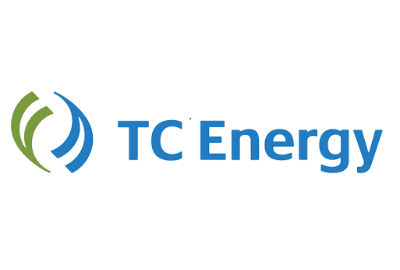Sign up for daily news updates from CleanTechnica on email. Or follow us on Google News!
Everybody knows what a wind turbine looks like. The same goes for solar panels. But no such ubiquitous standards of design hold sway in the emerging field of wave energy, where practically anything goes. In the latest development, the Danish startup Wavepiston is forging ahead with a design that undulates with the motion of waves like a deconstructed sea serpent.
Serpent-like Wave Energy Device Spotted At Sea
Wavepiston demonstrated its eponymous Wavepiston device in the North Sea back in 2019. The device seems to have caught the eye of wave energy researchers in other parts of the world, too.
The US Department of Energy’s Pacific Northwest National Laboratory posted a detailed technical report on the North Sea demonstration at its Tethys Engineering shared knowledge base for marine renewable energy. The report included a business analysis supporting a “viable market launch plan” for the device, though the early-stage design was due for a series of refinements.
In the latest news on that score, last June the news organization Offshore Energy Biz noted that Denmark’s Energy Technology Development and Demonstration Program provided a grant of more than €2 million to Wavepiston and two academic partners, the Technical University of Denmark, and Aalborg University, for further improvements to the device.
“The grant is for a collaboration project called ‘Composites, Hybrid testing and Simulations for a disruptive Wave Energy Converter (COHSI-WEC),’” noted reporter Amir Garanovic.
With an assist from the grant, Wavepiston and its partners are working on a redesign that will reduce the cost of the device while enhancing its durability and performance.
How It Works
In an update posted on October 4, the Oceans and Fisheries branch of the European Commission noted that the EU BlueInvest Readiness Assistance program has shepherded another €4.4 million worth of equity funding into the Wavepiston effort.
Wavepiston also received funding from the EU Horizon 2020 Research & Innovation program for a demonstration project located at its Oceanic Platform of the Canary Islands (PLOCAN) test site, six nautical miles south of the Port of Las Palmas in Spain.
“The full-scale demonstration system consists of a single Wavepiston WEC (the string) with 24 energy collectors (length 200 m, width 8 m) and a turbine generator on the PLOCAN platform for conversion to electricity,” Wavepiston explains. The installation is currently in its final stages of construction, so stay tuned for more on that.
The project includes an integrated desalination system, as does another Wavepiston demonstration funded by EU Horizon 2020, located at the tourist destination of Isola Piana, off the coast of Sardinia.
As for how it works, that’s simple — or not, as the case may be. Wavepiston provides a detailed explanation of wave dynamics on their website. They also offer a short version:
In the ocean a chain of energy collectors is stretched between two anchored buoys.
When waves roll along the Energy collectors, plates are moved back and forth.
The moving plates pump seawater into a pipe.
The pipe leads the pressurised water to a turbine and/or a reverse osmosis system in a dry and easily accessible location for energy conversion and/or desalination.
The costs are massively reduced due to the light flexible structure, optimized mooring and modular design.
Wavepiston also notes that its device deploys non-polluting materials and technologies commonly used in offshore industries.
Damn The LCOE, Full Speed Ahead
Wavepiston has laid plans for a pre-commercial demonstration of €200/MWh by 2025. When ready for utility-scale launch in 2032, Wavepiston anticipates dropping the cost down to €40/MWh.
As for what that means in terms of competition from wind, solar, and other renewable resources, that’s a good question. Energy analysts routinely use a calculation called the Levelized Cost of Energy to compare energy projects that are vastly different in type and scale (check out CleanTechnica’s coverage here).
Wave energy has a lot of catching up to do in terms of LCOE. Like its cousin tidal energy, wave energy is a brand new industry. Even as technology obstacles are falling, these new marine activities need to develop economies of scale and scope in order to compete with more established forms of renewable energy.
However, LCOE is only one measure of value. CleanTechnica attended the 2023 Ocean Energy Europe conference in The Hague last month, where wave and tidal stakeholders made the case that LCOE goes out the window when energy consumers need to get their hands on clean kilowatts.
Both wave and tidal energy devices provide a number of key benefits that give them an advantage in some environments, one example being islands and other off-grid coastal locations.
Wave and tidal devices are a particularly good fit for tourist destinations and ecologically sensitive locations, partly because they don’t take up valuable space on land. Unlike offshore wind turbines, they also have an extremely low coastal profile.
As noted by Wavepiston, the integration of a water desalination system could also add value to wave energy systems for coastal communities experiencing freshwater scarcity. In addition, wave power is available on a 24/7 basis, which can reduce costs associated with energy storage.
Another cost-reducing pathway under exploration is the idea of piggybacking wave energy devices with offshore wind farms and floating solar arrays. Aquaculture stakeholders are also part of this multi-use movement.
Wave Energy Devices Are Like Fingerprints & Ears
Another running theme of the Ocean Energy Europe conference was inter-cooperation among the 30 or so wave energy test sites scattered around the globe. Progress on that front appears to be under way, too.
Here in the US, for example, the TEAMER program aims to provide wave energy innovators from around the world with access to the nation’s network of marine energy test sites, including open-ocean sites as well as enclosed tanks and other laboratory facilities.
The most ambitious wave energy test site in the US is PacWave South off the Oregon coast, which is still under construction. Four promising wave energy devices are already lined up to use the open ocean, grid-connected facility once it’s ready for action in 2025 (see more CleanTechnica PacWave coverage here).
The four participating firms are CalWave Power Technologies Inc., C-Power, Littoral Power Systems, and Aquaharmonics, in a joint effort with Portland State University. PacWave South will provide them with a real-life test of open ocean conditions including salt water corrosion, the never-ending march of wave pressure, and extreme wave conditions.
The four projects are currently undergoing tailor-made, soup-to-nuts pre-prototype shakedowns with an assist from experts at the National Renewable Energy Laboratory, a branch of the US Department of Energy.
“Like fingerprints and ears, no two wave energy devices are exactly alike,” observes NREL.
And how. CalWave’s barge-like wave converter has already crossed the CleanTechnica radar, as has C-Power’s Stingray device, the elegant Aquaharmonics vertical design, and Littoral’s funnel-shaped turbine system which can also be applied to onshore infrastructure.
If you’ve come across some interesting new wave energy designs, drop us a note in the comment thread.
Follow me @tinamcasey on Bluesky, Threads, Post, and LinkedIn.
Image: Wave energy converter deploys strings of undulating, underwater plates (courtesy of Wavepiston).
Have a tip for CleanTechnica? Want to advertise? Want to suggest a guest for our CleanTech Talk podcast? Contact us here.
EV Obsession Daily!
I don’t like paywalls. You don’t like paywalls. Who likes paywalls? Here at CleanTechnica, we implemented a limited paywall for a while, but it always felt wrong — and it was always tough to decide what we should put behind there. In theory, your most exclusive and best content goes behind a paywall. But then fewer people read it!! So, we’ve decided to completely nix paywalls here at CleanTechnica. But…
Thank you!
Community Solar Benefits & Growth
CleanTechnica uses affiliate links. See our policy here.



